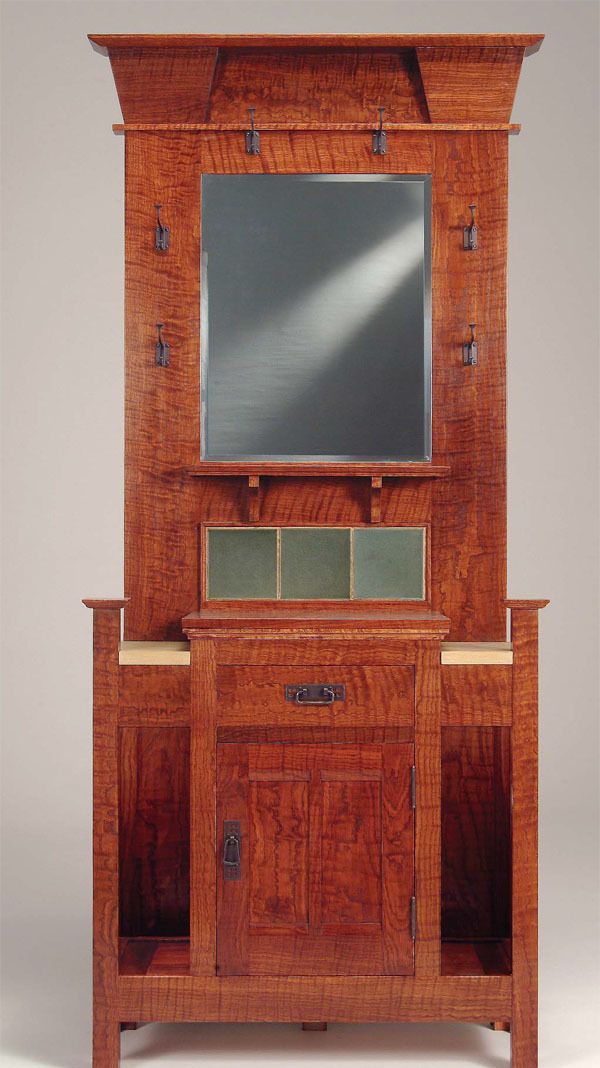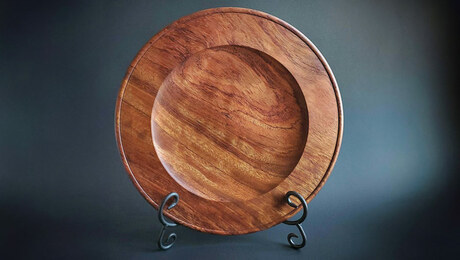Updating an Antique
How an Arts and Crafts hall stand was redesigned for the 21st century without compromising its character
Synopsis: Reproducing furniture doesn’t limit you to identically reproducing function. The author, a designer by trade, kept the proportions from an inspiration piece but altered its function to fit 21st-century needs. She updated an Arts and Crafts hall stand so that the umbrella storage portions became capped storage compartments. This article will get your creative juices flowing for similar adjustments on your pieces.
From Fine Woodworking #165
Several years ago, I came across a photo of an Arts and Crafts hall stand in a book on English interiors. I was struck by the bold bevels of the crown and the interplay of vertical and horizontal elements throughout the piece.
Recently, while looking through a lumber broker’s inventory, I ran across a stack of curly white oak. The figure, rippled like a pre-Raphaelite beauty’s hair, immediately brought to mind the Arts and Crafts aesthetic of the era during which the original hall stand had been built. It was perfect for this early 20th-century piece.
The hall stand that inspired this piece featured umbrella stands flanking the central storage area. As delightfully English as that may have been, in the 21st-century .United States, relatively few people outside of urban areas use umbrellas. Still, I wanted to preserve the play between the different levels of the base that were integral to the piece’s character. I decided to enclose the umbrella-stand compartments and top them with a durable surface on which a person running out the door could place a cup of coffee while donning a hat or adjusting a scarf. For this surface I chose Indiana limestone because it’s locally produced, affordable, and easily worked. To maintain the Edwardian character of the stand, I drew slatted side panels, incorporating a decorative cutout in period style. The side compartments can be used for storage or display, but at only 5-1⁄2 in. wide, these areas are limited in their usefulness. I had considered enlarging the cabinet to make these areas more practical but abandoned the idea because it would have detracted from the hall stand’s lovely proportions.
I designed my hall stand so that the mirror section fits against a wall, with the cabinet portion stepped forward slightly to accommodate a baseboard and shoe molding. The wooden top and side trim of the base cabinet end at the face of the mirror frame’s bottom rail. It’s a good idea to have a particular location in mind and to measure architectural moldings located there before finalizing this design detail.
For the full article, download the PDF below.
Fine Woodworking Recommended Products

Sketchup Class

Dividers

Stanley Powerlock 16-ft. tape measure























Log in or create an account to post a comment.
Sign up Log in